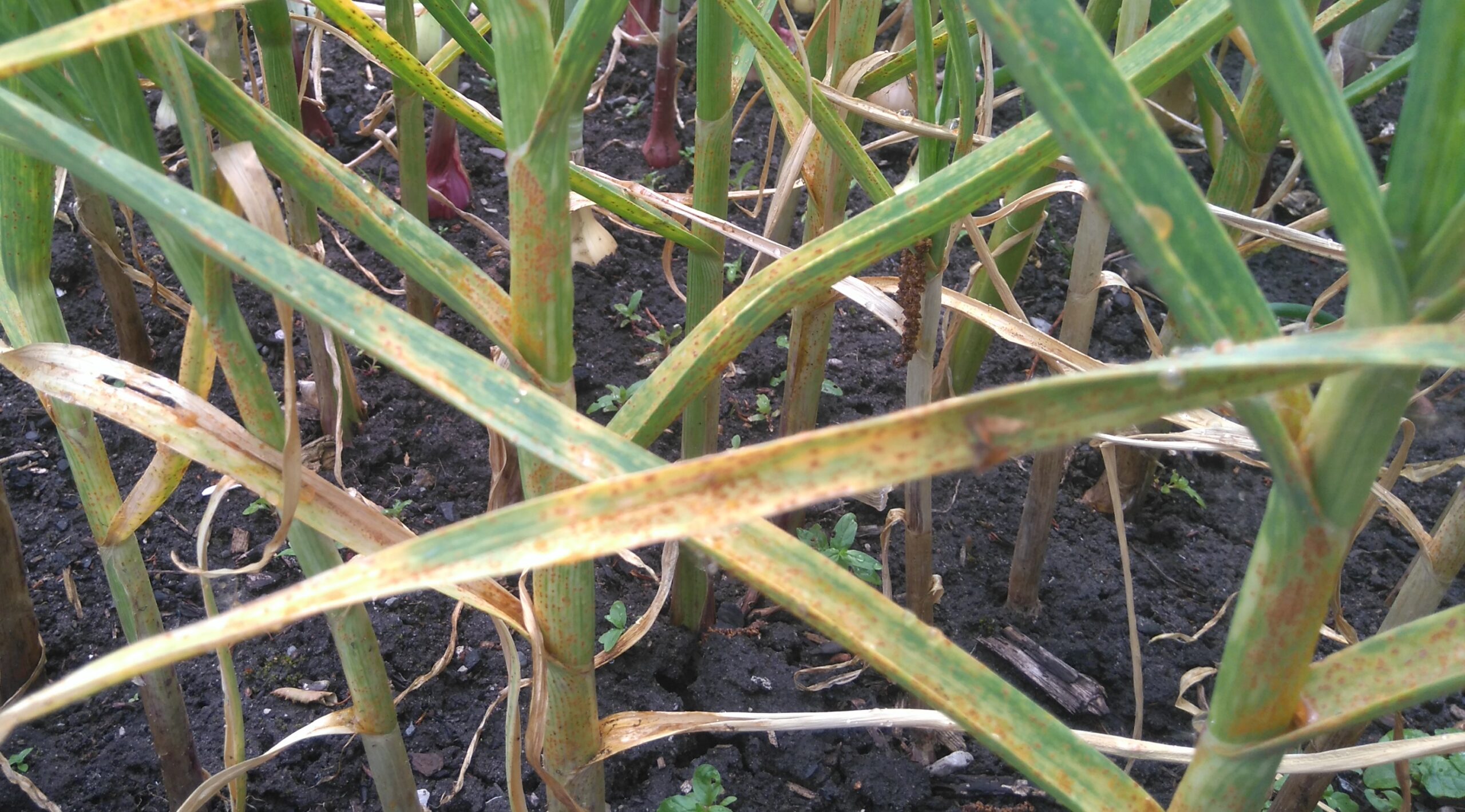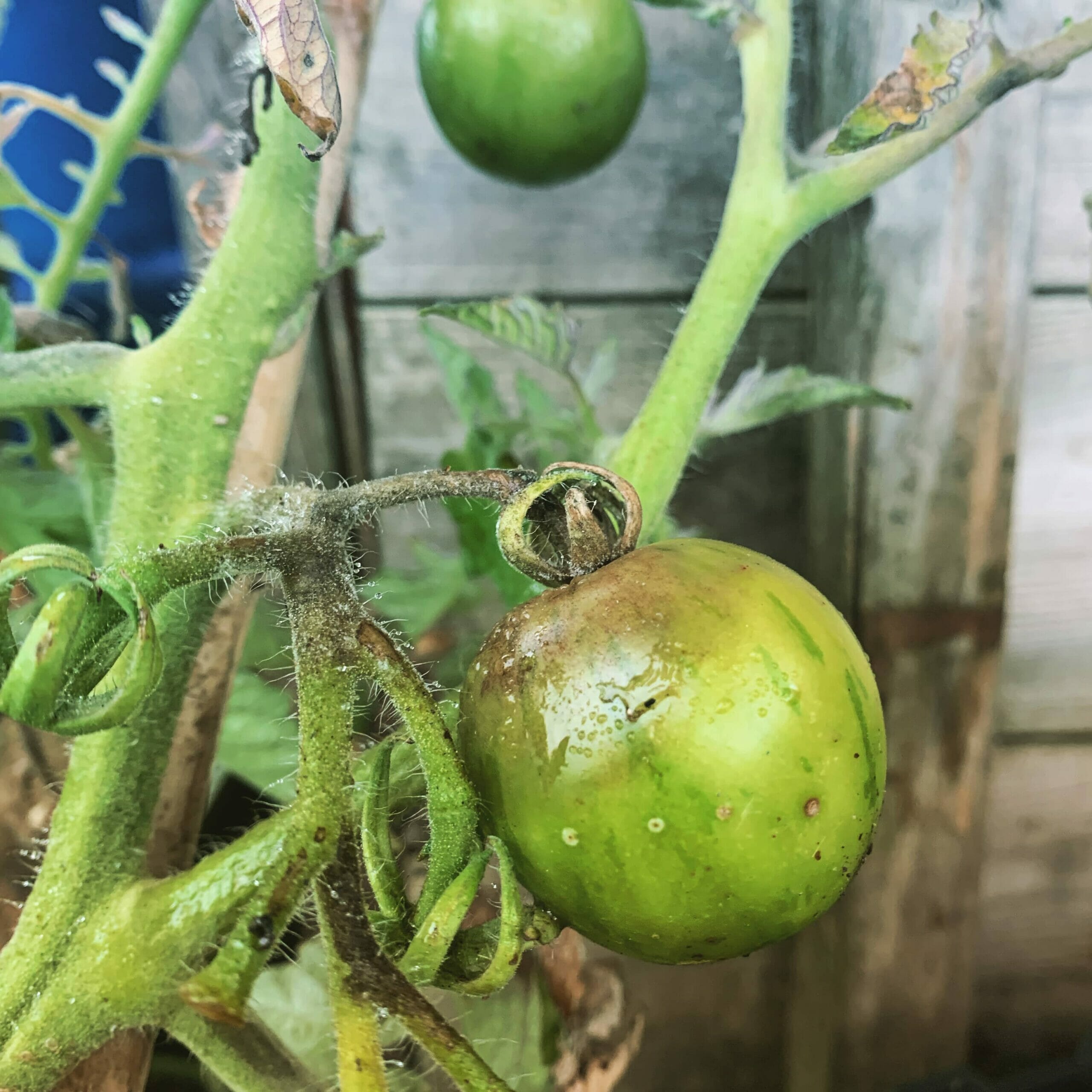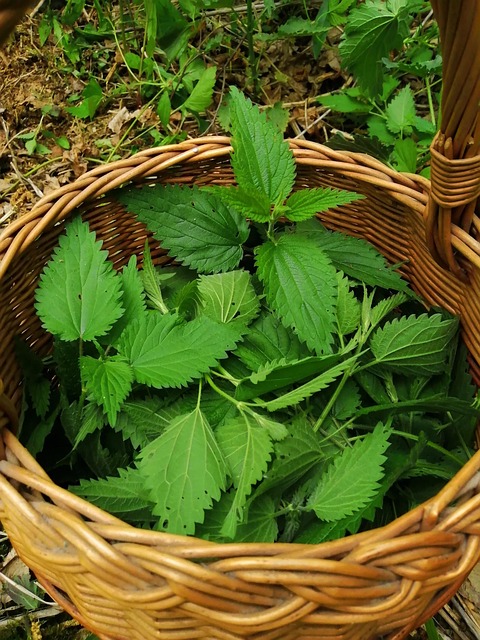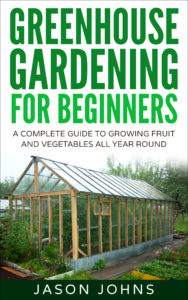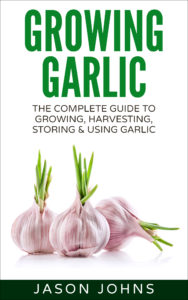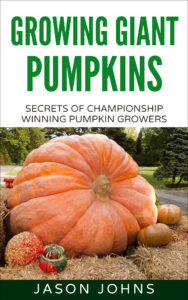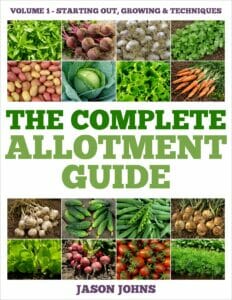Blossom End Rot
Have your tomatoes got dark blotches on the end that are creeping across the fruit? Don’t panic, it is not the end of your crop, but something called blossom end rot, caused by lack of calcium in the fruits and it also affects peppers and aubergines. By making some adjustments to your watering schedule, you can often protect the rest of the fruits and stop them from being ruined too.
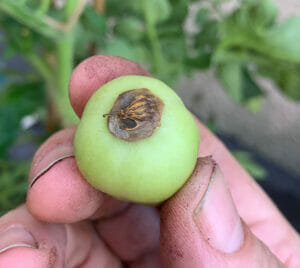
What Is Blossom End Rot?
This is a common problem that affects a lot of gardeners. It is caused by poor growing conditions rather than pests and diseases. It is most commonly spotted on tomatoes but can be found on aubergines and peppers too.
Symptoms
Blossom end rot starts as a circular patch on the end of the fruit where the flower was, hence the name “blossom end”. The patch varies in colour from a greenish brown through to black. As the patch increases in size, it becomes sunken and the fruit takes on a flattened appearance at the flower end. The size of the patch varies depending on the size of the fruit.
Cause
This problem is caused by a lack of calcium in the fruits. If the fruit does not have enough calcium, then the cell membrane permeability is reduced which leads to the cells swelling, and then the membrane structure leaks and is destroyed. Fewer new cells grow and this causes the dark, sunken area you see on the end of the fruits.
It is actually rare that soil or compost will lack calcium as there is usually plenty in the soil and even within the plant itself. However, for calcium to reach the furthest points of the plant where the fruit is located, there needs to be a good flow of water through the plant. As the fruits are further from the roots than the leaves, they do not compete very well for calcium. So usually, this problem is caused by irregular or insufficient watering. It is common in greenhouse and polytunnel grown plants where they dry out very quickly due to the heat.
Plants grown in pots or growing bags, with limited space for the roots, are at the most risk of irregular water supply and blossom end rot. Plants in the ground are less likely to be affected by this problem because they have greater access to water.
If the air humidity is too high, this can limit the uptake of water by the roots and also cause blossom end rot. Therefore, if you are growing in a greenhouse, daytime ventilation is very important.
Control
Unfortunately, once a fruit has contracted blossom end rot, there is nothing you can do to save it. Remove and dispose of the infected fruit so the plant does not waste any more resources on it. However, you will be pleased to know, you can stop other fruit from becoming afflicted with this problem.
Keep the soil or compost around your plant consistently moist throughout the growing season and do not allow it to dry out. This can mean watering two or more times a day in the hottest weather. It is better for your plant to water it twice a day than to give it lots of water once a day. If you struggle with time to water your plants, use some sort of automatic watering solution. A simple and cheap way to do this is to take a 500ml plastic bottle and fill it with water. Screw the cap on and poke some holes in the lid. The number and size of the holes determine how quickly the water drips into the soil. Push the bottle lid first into the soil at the base of the plant.
Growing bags are notoriously difficult to moisten thoroughly once it has dried out.
Spraying the leaves with a calcium salt, such as calcium nitrate, is not an effective treatment because the calcium is not easily absorbed by the fruits. The nitrate can encourage leave growth which takes even more calcium away from the leaves.

